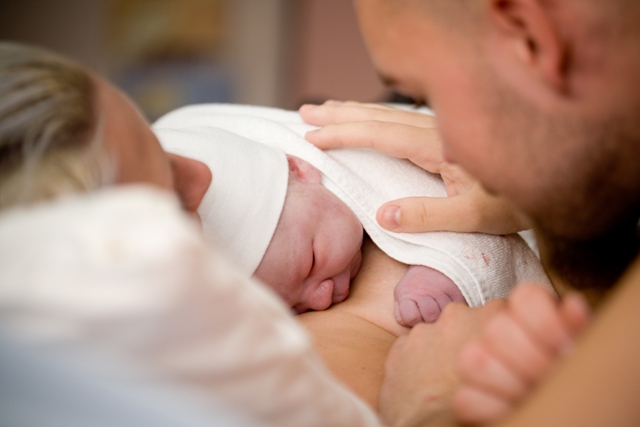Mum after the birth
You’ve just been through a life-changing event. Here’s how to cope with those first few days.
Your new body
It will take a while for things to get back to normal. A postnatal body feels very different from a pregnant body. Knowing what to expect can make things easier.
Lochia
After the baby is born, most women have a discharge called lochia, which is a bit like a period. It may be heavy at first but gradually get lighter. You may need to use two maternity-grade sanitary pads for the first few hours, then just one at a time. The loss is bright red to begin with, then pinkish for a week, then brownish-yellowish-white. If you pass blood clots of blood bigger than a 50 cent piece, tell your LMC, and save that pad in a plastic bag to show her when she calls. It may be that not all of the placenta came away after the birth and some pieces were left behind. Some bleeding may occur for 3-5 weeks following the birth.
 Your lochia should not be very smelly. If it is, discuss with your LMC as you may have an infection.
Your lochia should not be very smelly. If it is, discuss with your LMC as you may have an infection.
Afterpains
You may feel ‘afterpains’, like contractions, sometimes very strongly when you begin a breastfeed. These can be particularly strong after second and subsequent babies. Your LMC may suggest taking medication to help. They only last for a few days and are a good sign that your uterus is shrinking back to its usual size.
A stitch in time
Stitches after a cut (episotomy) or tear, can feel quite uncomfortable for the first few days. Try these tips:
- eat a diet rich in fibre so that passing a motion is easy
- keep the area clean and use soft tissues to pat the area dry
- practise your pelvic floor muscle exercises
- if they sting when you urinate, take a cup of warm water into the toilet with you and pour this over stitches as you go. Or urinate in the shower or bath just before you get out!
- if you are worried about opening your bowels for the first time (and we all are!) fold a clean sanitary pad in half and hold this on your stitches while you go.
Perineal pain
Even if you haven’t had a tear or a cut, your perineum may feel very bruised and sore. If you find it uncomfortable to sit down, your LMC can give you a support cushion. An ice pack – applied for short periods – can also ease the pain. You will be encouraged to get up and move around as soon as possible, even if you have had a caesarean; being active leads to a quicker recovery. If your stitches are smelly or seem to be oozing, ask your LMC to check them. There could be an infection and you might need antibiotics.
Coping after a caesarean
If you’ve had a section, you may find your postnatal recovery is slower than that of other mothers. No wonder – you’ve had major surgery. You’ll have:
A cut – it may look enormous at first, but it will gradually shrink along with your abdomen and eventually fade from red to a thin, fine white line. You may also have a drain in the cut, a catheter in your bladder and a drip in the back of your hand! All these things will gradually be taken out over the next 24 hours or so, making you freer to enjoy your baby. If you need to cough or pass wind, it can be very painful. Hold a pillow or both of your hands over the wound while you do so.
Stitches – depend on the surgeon. Some are absorbable, others need to be removed.
Pain relief – you may be given injections or it is often given via a pump or through your drip. Alternatively, you may be given suppositories which are put in your back passage, every few hours. They are very effective in keeping you pain-free and are not harmful if you’re breastfeeding. Do tell your midwife or LMC if you’re still in pain – it’s important that you’re comfortable enough to cuddle and feed your baby.
Wind – the surgery will have disturbed your digestive system and you may have wind in the lower bowel. Eat plenty of fruit and drink plenty of fluids to keep things moving – it will soon fade. Some women find that peppermint tea also helps. Avoid fizzy drinks.
Advice on the best way to move, lift and feed your baby – you may need to try various feeding positions until you find one that’s comfortable. Midwives will help you with this. Keep your circulation working while you’re in bed by wiggling your toes and circling your ankles.
Most mothers find the first few days quite hard but then things improve quickly. You may go home after about four or five days. See if your partner, or a friend can help out in the first few weeks at home.

